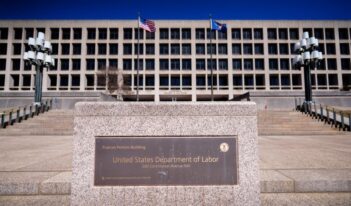
Report blames regulators’ lack of sufficient oversight in reviewing loan applications.
A large number of banks that borrowed money from the Troubled Asset Relief Program (TARP) have used a federal small business fund to repay TARP loans and relieve themselves from TARP’s higher interest rates and restrictions, including limitations on executive pay and dividend payments, according to a recent government oversight report.
The overseer’s report asserts that interagency communication failures and a lack of meaningful regulatory review enabled borrowers to divert funds away from the Small Business Lending Fund’s (SBLF) intended purpose—to increase “the availability of credit for small businesses” and address a “dramatic decrease” in bank lending following the financial crisis. However, the federal regulators that administer SBLF rigorously contest these conclusions—the Department of Treasury claims the report contains various inaccuracies and omissions.
According to this oversight report, SBLF failed to increase small business lending due to a “lack of effective communication” and coordination between Treasury and the federal banking regulators—the Federal Reserve Board, the Federal Deposit Insurance Corporation (FDIC), and the Office of the Comptroller of the Currency (OCC).
In particular, the report points to agencies’ failure to establish a clear division of labor to facilitate their review lending plans submitted with SBLF applications. TARP recipients with assets of $10 billion or less are eligible for SBLF funds if they propose a “small business lending plan” that describes their intention and capability of providing small business lending and they repay TARP back in full.
Yet according to the report’s author, the Office of the Special Inspector General for TARP, federal regulators did not evaluate whether these plans were realistic or whether applicants were actually prepared to lend out capital. Based on a review of thirty-two SBLF applications, the Inspector General concluded that Treasury invested SBLF funds in some institutions with lending plans that contained “obvious deficiencies” recognizable even after “a superficial review.” The Inspector General attributes these results to Treasury’s “check-the-box” review of the lending plans that “focused on form over substance.”
Apparently, TARP recipients could qualify for SBLF without identifying the source or quantity of funds they intended to lend. The Inspector General also found that in reviewing banks’ proposed lending plans, federal regulators focused on bank’s viability rather than on their intention to increase lending.
In the absence of meaningful regulatory review, the Inspector General found that SBLF lacked adequate incentives to increase small business lending. Unlike TARP, SBLF encouraged lending by rewarding banks that increased small-business lending with lower borrowing rates at which participants were required to repay the government. Nonetheless, the Inspector General explained that former TARP banks with no intention or capability of increasing lending were encouraged to refinance through SBLF because they would end up paying a similar cost for capital than they would under TARP even if they had not refinanced. These banks could still evade TARP’s more onerous restrictions by refinancing.
During consideration of the SBLF, some of the bill’s Republican opponents cited a concern that TARP participants would have a “strong incentive” to shift to SFLB to evade the TARP “oversight regime.” Perhaps confirming the validity of this concern, a 2011 Government Accountability Office (GAO) survey included various banks’ reports that the opportunity to leave TARP was a primary reason they had applied for SBLF funds.
Federal regulators have contested many of the Inspector General’s findings. Treasury asserts that it rejected more than half the TARP bank applicants and that these applications “received robust scrutiny.” Treasury also claimed that the Inspector General’s findings “stand in contrast” to findings of the two oversight bodies that by law hold oversight authority over SBLF—the GAO and Treasury’s Office of the Inspector General.
Similarly, according to the TARP Inspector General, in terms of small business lending, TARP banks “are significantly underperforming compared to non-TARP banks” that received SBLF funds. Former TARP banks that borrowed SBLF funds only sufficient to repay their TARP loans have increased lending by only $.25 for each dollar they borrowed. Similar banks that borrowed SBLF funds beyond the amount they needed to repay TARP increased lending by $1.67 for every dollar they borrowed. Meanwhile, those institutions who received SBLF funding but not participate in TARP increased lending by $3.45 for each $1 in SBLF funds.
Treasury, however, claimed that former TARP banks that participate in SBLF have contributed to substantial increases in small business lending. Treasury explained that former TARP bank lending may appear low when compared with other SBLF participants because former TARP banks borrowed in substantially lower amounts and because these banks used TARP investments to increase small business lending before participating in SBLF.
Treasury has indicated its view that SBLF is a success. Just one week prior to the Inspector General’s report, Treasury released a report claiming that the SBLF increased lending for seven straight quarters, increasing an estimated “$8.9 billion since the depths of the recession in 2009.” Last year, Treasury estimated that more than 60% of SBLF participants had increased small business lending by 10% or more.
Federal banking regulators also issued strong responses to the Inspector General’s rep
ort. The FDIC acknowledged emphasizing banks’ vitality in its review of SBLF applications but explained that it entered into an agreement with Treasury in which the latter agreed to review the applicants’ small business lending plans. The OCC wrote that while it accepted the Inspector General’s data, other factors contributed to low lending, particular poor economic conditions, demand for these loans, and the number of “creditworthy borrowers.”
Federal agencies also disagreed with the Inspector General’s recommendation that to “protect taxpayers’ investment,” regulators should preclude former TARP banks receiving SBLF funds from making dividend payments until they increase small business lending Yet the FDIC, Federal Reserve, and OCC all separately claimed that they lack the authority to preclude dividend payments.
Although regulators contest the Inspector General’s specific findings, it seems clear that a significant portion of SBLF funds have been allocated to TARP repayment. So far, Treasury has invested only $4 billion of the $30 billion that Congress authorized for the SBLF pursuant to the Small Business Jobs Act of 2010. According to the data analyzed by the Inspector General, Treasury has allocated 80% of these funds to 137 former TARP banks that in turn used $2.1 billion of the funds to repay TARP loans.



